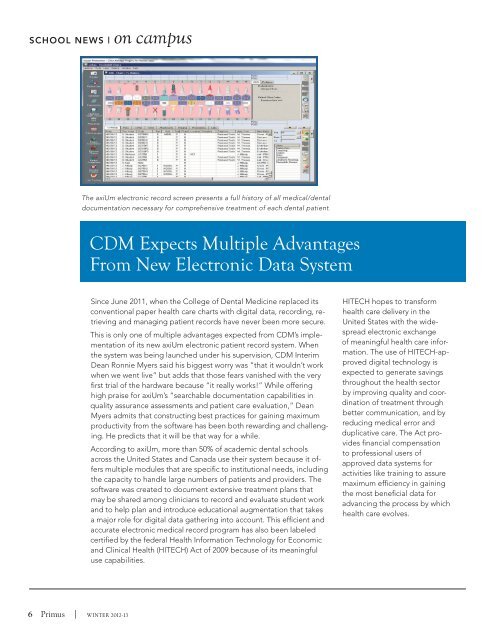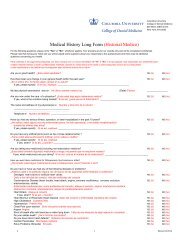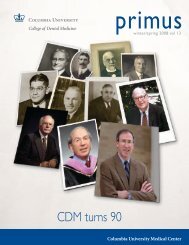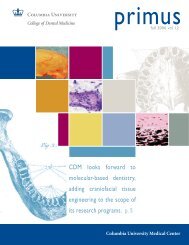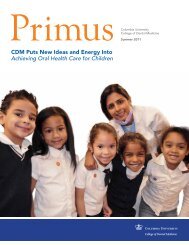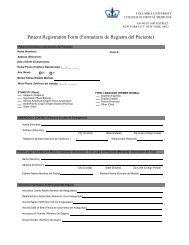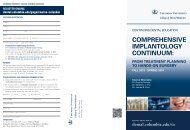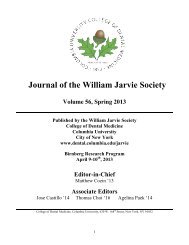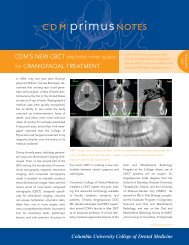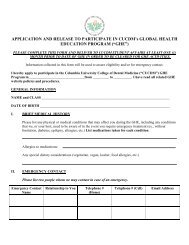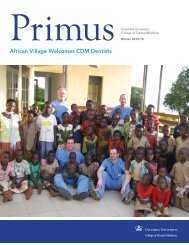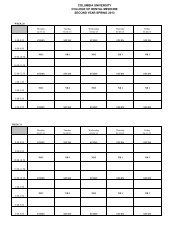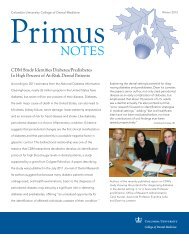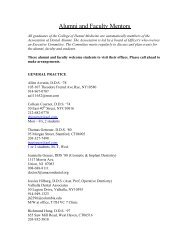Winter 2012-13 - College of Dental Medicine - Columbia University
Winter 2012-13 - College of Dental Medicine - Columbia University
Winter 2012-13 - College of Dental Medicine - Columbia University
Create successful ePaper yourself
Turn your PDF publications into a flip-book with our unique Google optimized e-Paper software.
SCHOOL NEWS | on campus<br />
The axiUm electronic record screen presents a full history <strong>of</strong> all medical/dental<br />
documentation necessary for comprehensive treatment <strong>of</strong> each dental patient.<br />
CDM Expects Multiple Advantages<br />
From New Electronic Data System<br />
Since June 2011, when the <strong>College</strong> <strong>of</strong> <strong>Dental</strong> <strong>Medicine</strong> replaced its<br />
conventional paper health care charts with digital data, recording, retrieving<br />
and managing patient records have never been more secure.<br />
This is only one <strong>of</strong> multiple advantages expected from CDM’s implementation<br />
<strong>of</strong> its new axiUm electronic patient record system. When<br />
the system was being launched under his supervision, CDM Interim<br />
Dean Ronnie Myers said his biggest worry was “that it wouldn’t work<br />
when we went live” but adds that those fears vanished with the very<br />
first trial <strong>of</strong> the hardware because “it really works!” While <strong>of</strong>fering<br />
high praise for axiUm’s “searchable documentation capabilities in<br />
quality assurance assessments and patient care evaluation,” Dean<br />
Myers admits that constructing best practices for gaining maximum<br />
productivity from the s<strong>of</strong>tware has been both rewarding and challenging.<br />
He predicts that it will be that way for a while.<br />
According to axiUm, more than 50% <strong>of</strong> academic dental schools<br />
across the United States and Canada use their system because it <strong>of</strong>fers<br />
multiple modules that are specific to institutional needs, including<br />
the capacity to handle large numbers <strong>of</strong> patients and providers. The<br />
s<strong>of</strong>tware was created to document extensive treatment plans that<br />
may be shared among clinicians to record and evaluate student work<br />
and to help plan and introduce educational augmentation that takes<br />
a major role for digital data gathering into account. This efficient and<br />
accurate electronic medical record program has also been labeled<br />
certified by the federal Health Information Technology for Economic<br />
and Clinical Health (HITECH) Act <strong>of</strong> 2009 because <strong>of</strong> its meaningful<br />
use capabilities.<br />
HITECH hopes to transform<br />
health care delivery in the<br />
United States with the widespread<br />
electronic exchange<br />
<strong>of</strong> meaningful health care information.<br />
The use <strong>of</strong> HITECH-approved<br />
digital technology is<br />
expected to generate savings<br />
throughout the health sector<br />
by improving quality and coordination<br />
<strong>of</strong> treatment through<br />
better communication, and by<br />
reducing medical error and<br />
duplicative care. The Act provides<br />
financial compensation<br />
to pr<strong>of</strong>essional users <strong>of</strong><br />
approved data systems for<br />
activities like training to assure<br />
maximum efficiency in gaining<br />
the most beneficial data for<br />
advancing the process by which<br />
health care evolves.<br />
6 primus | winter <strong>2012</strong>-<strong>13</strong>


